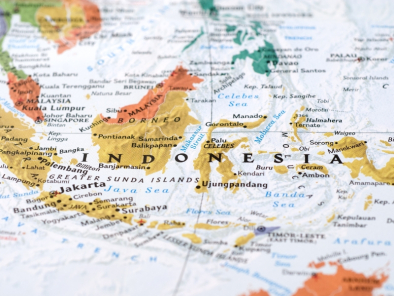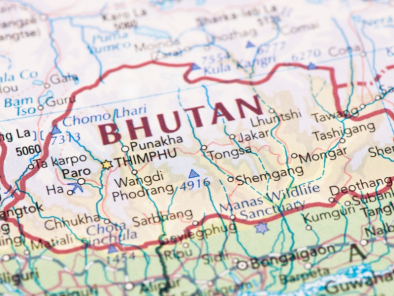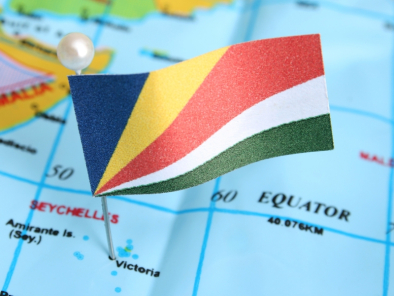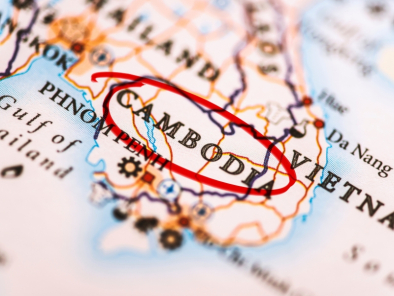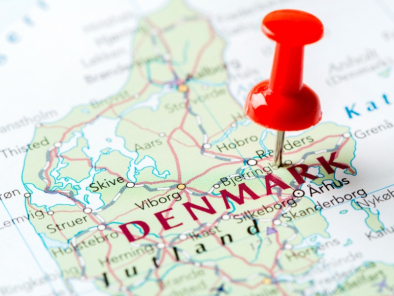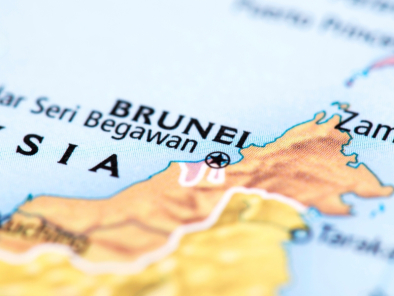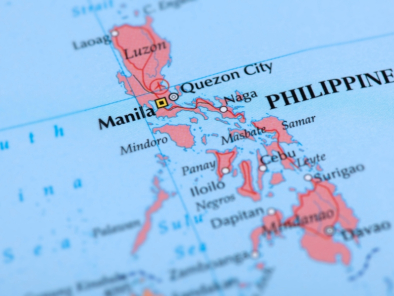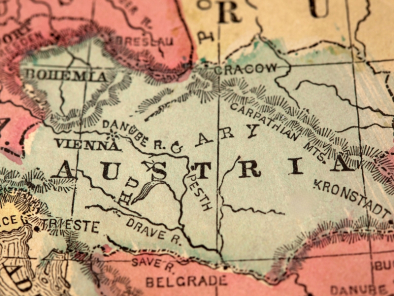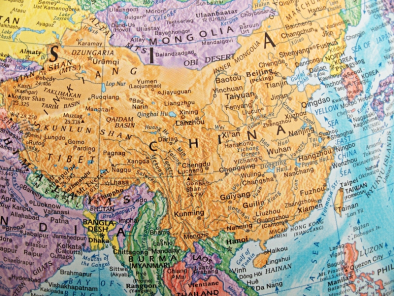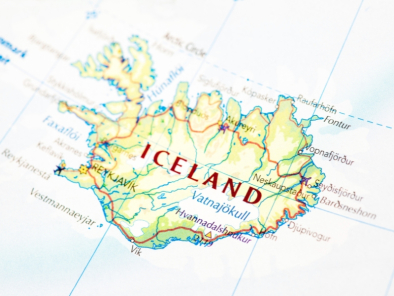
Posted by: Leo Travel Hub
Getting There
Visas: The visa is to be obtained prior to arrival in the country
Distances between cities in Iceland
By Car: The Ring Road (Route 1), which circles the island, is mostly paved and makes a pleasant driving tour from spring to autumn. Secondary roads across the central highlands are open from early July through to late August, depending on the weather
CURRENCY:
Currency: Icelandic Krona (ISK). ISK1 =
100 aurar
Notes: ISK5000, 2000, 1000 and 500
Coins: ISK100, 50, 10, 5 and 1
Credit cards: International credit cards, including
Visa and MasterCard are widely accepted by restaurants, hotels and shops.
Exchange
Most major currencies can be exchanged at banks or bureaux de
change in
Local currency can be obtained from international ATMs in most towns and
at the airport with an international credit or debit card. You will be charged
for using this facility and should ascertain in advance from your account
holding bank as to what these charges will be. Traveller's cheques are widely
accepted. Carry them in USD or Euros for the widest acceptance.
Tips:
Service is generally included in prices in
Telephone
International dialling
code: 354
Area codes: There
are no area codes as such in
All phones in
Health Concerns
The water in
Citizens of the EU, Liechtenstein and Norway qualify for free medical care as
long as they are in possession of a valid EHIC (European Health
Insurance Card, which replaces form E111 as of January 1, 2006), which may be
obtained from post offices or official governmental channels in their country
of origin. Failing this, patients will be charged in full for medical care.
Medical treatment is extremely advanced and sophisticated but is
correspondingly expensive. Consequently, citizens of all other countries are
recommended to acquire full medical insurance.
You can obtain a doctor by calling Tel: 1770.
If engaging in outdoor pursuits (as many visitors to
Personal Safety
Although even petty theft is unlikely don't neglect to take common
sense precautions to protect your belongings, fasten your bag and try not
to carry important documents with you if it can be avoided, as much to guard
against accidental loss as deliberate theft.
If travelling outside the capital makes sure that you stick to
marked paths or employ a guide.
One minor point of safety, but one that visitors often fall foul
of, is that the water from the hot water tap is extremely and instantly
hot in
Note if you are a keen angler that it is illegal to bring fishing tackle into the country unless it has been disinfected and sealed by a qualified veterinary surgeon before embarkation. It is easier to hire equipment while in the country.
Emergency Numbers
Police 112
Ambulance 112
Fire 112
Regions in Brief:
180,000 Icelanders live in greater
The
The South–Suthern Iceland is packed with attractions.
The golden Triangle” of Gulfoss waterfall, Geyser and Thingvellir national park
shows off the
The West–The Snaefellesness peninsula, jutting out of north of reykavik, is a great place for whale watching and glacier tour.
The North–The North is anchored by
The East – Europ’s largest glacier, atnajokull, anchors
The interior – Desolate, strange and rare, this is truly unique place.
GETTING AROUND:
Getting
There
Air
: air Iceland, departing from reykjavik City airport, hits all the major
populated area including Akureri, Egilsstaoir, Hornafjorour, Isafjorour, the
Westman Island, grimsey, thorshofn, Vopnafjorour, the Faeroe Island and the
Greenland.
Bus:
In
Train: There are no trains in
CLIMATE
Weather
Considering the northerly location of
Coastal areas in
The Northern Lights
The Northern Lights can often be seen on clear, cold nights when the moon isn't
too bright. The best time of the year is between November and February
when the sky is at its darkest. The Northern Lights are easiest
to see in the open countryside where there is not much light pollution. They
usually appear after dinner, beginning around 9pm and continuing
until well past midnight.
Midnight Sun
For two months in the summer there is
continuous daylight in
The winter darkness, with only three
to four hours' daylight, lasts from around November until the end of January.
|
Daylight (Sunrise/Sunset) |
||||
|
|
Reykjavík |
Ísafjörður |
||
|
Month |
|
Sunset |
|
Sunset |
|
Jan |
11:19 am |
03:44 pm |
12:01 pm |
03:11 pm |
|
Feb |
10:09am |
05:14 pm |
10:15 am |
05:19 pm |
|
Mar |
08:37 am |
06:45 pm |
08:31 am |
06:59 pm |
|
Apr |
06:47 am |
08:18 pm |
06:43 am |
08:31 pm |
|
May |
05:01 am |
9:51 pm |
04:26 am |
10:35 pm |
|
June |
03:24 am |
11:29 pm |
Daylight 24 hours a day |
|
|
July |
03:04 am |
11:57 pm |
02:34 am |
10:40 pm |
|
Aug |
4:32 am |
10:33 pm |
4:34 am |
10:40 pm |
|
Sept |
06:08 am |
8:45 pm |
6:12 am |
8:50 pm |
|
Oct |
7:35 am |
6:59 pm |
7:41 am |
7:02 pm |
|
Nov |
9:09 am |
5:13 pm |
9:41 am |
4:50 pm |
|
Dec |
10:44 am |
3:49 pm |
11:25 |
3:18 pm |
|
Average Temperatures (Degrees celsius) |
||
|
|
Reykjavík |
Akureyri |
|
January |
-2,3 |
-4,3 |
|
April |
3,7 |
3,1 |
|
July |
10,1 |
7,5 |
|
October |
4,8 |
3,8 |
Food & Drink
Ponnukokur: Pancakes rolled with
jam, sugar or whipped cream.
Kleinur: Twisted doughnuts
Astarpungar: Doughnut holes. You'll
find a vast selection of dairy products on the menus and grocery store shelves,
including first-class varieties of butter, cheese, cream, and yoghurt.
Ugbrauð: Lunches usually include sliced,
buttered rye bread served with pickled vegetables and bits of fresh or smoked
salmon, herring or trout. These fish and others, like haddock and cod, are also
grilled with butter or doused with wine, garlic, or mustard-based sauces.
Vínarterta: Cakes filled with prune
or rhubarb jam.
Rjomaterta: Cream cakes.
Mommukökur: Gingerbread cookies.
Laufabrauð (leaf bread): Is a unique holiday goodie that's deep-fried and pressed with beautiful, leaf-like patterns.
TIME:
CLOTHING:
In the summer, light clothing is often all you need - but always be prepared for both cold and wet weather at all times of the year. The weather can be extremely changeable. Icelanders often say, "If you don’t like the weather, just wait 15 minutes." And always bring a bathing suit, whatever time of the year you visit. A favourite pastime is year-round outdoor swimming in countless geothermaly heated pools and lagoons, with a typical temperature of 25-28°C.
ELECTRICITY:
The voltage used is 220 volts.
TIPS:
This is a matter of personal discretion. Tips are appreciated and expected for good service in restaurants and other places. Although restaurant bills often include a service charge, this amount is not typically for the waiters/staff. A typical tip is approximately 10%.
LANGUAGE:
Icelandic,
English, Nordic languages & German are also
widely spoken.
SHOPPING and MUST BUYS:
Probably the country's best-known exports are
the gorgeous handmade lopapeysa, or Icelandic sweaters,
meticulously knitted in colourful patterns from the wool of long-haired
Icelandic sheep. These soft, beautiful creations can be expensive, but they can
cost twice as much abroad. You can even purchase skeins of wool, patterns and
needles to knit your own sweaters. Sheepskin gloves and
slippers are also popular and of excellent quality. Other unique Icelandic
items include traditional fish-skin coats, belts and shoes. Also keep an eye out
for antique accoutrements and contemporary Nordic-style jewellery.
Bookstores also have wonderful finds, and most coffee-table volumes and
historic tomes can be found in English as well as Icelandic. If you're not a
photographer, picture books and guidebooks can be thoughtful souvenirs that
capture the places where your memories were made. Many bookstores and art
galleries also sell less expensive postcards, stamps, fine art cards, slides
and CDs that highlight
CITIES:
The
world’s most Northerly capital,
The northernmost European capital, today
This hub of cosmopolitan restaurants and chic nightspots is set amid an amazing variety of natural splendour; in a day from the city, you can easily climb glaciers, hike to geysers, and watch live volcanoes, then dress up, dine well, and party all night.
Getting Around
Attractions
Hallgrimskirkja
(Church og Hallgrimur)
Perlan (
A walk through landscaped gardens lead to the top of
Oskjuhlid Hill and
Arbaejarsafn
(Arbae Open –
Arbaejarsafn is
The
Heiti Potturinn (Hot Pots)
Geothermal swimming pools and hot pots play a major part in Icelandic life. The hottest pools have controlled temperatures of up to 44 degree Celisus and are said to have certain medical benefits. The largest is Laugardalslaug.
Excursions:
Blue Lagoon & Swimming Pools
A rough-hewn, sky-blue lake surrounded by rocky lava outcrops
provides a natural setting for the posh Blue Lagoon resort, southwest of
Curved metal bridges stretch over the geothermal heated
lagoon, while cedar sunning platforms, private pools, and a hidden sauna inside
a cave add to the attractive, ethereal ambience. While you're here, look
around: the lagoon's refreshing, skin-healing properties and the luxury spa
treatments attract international celebrities and glitterati.
Icelanders also love swimming, and several first-class pool facilities can be
found in and around
The beach at Nautholsvík has a stretch of coastline where
thermally heated water is mixed with the ocean, so you can take a seaside dip
any time of the year. Aside from the capital, most cities in
Whale Watching: The Ocean around
Geysir: The English word ‘geyser’ comes from a single geysir located in the South West of Iceland. The geysir area is also rich in walking paths that lead past steaming vents and colourful, mineral rich mud formations.
Gulfoss:
In a
Snaefellsjokull Glacier: Jutting out like a
dragon's head above the Faxafloi bay north-west of
Fishing villages have survived in the remote locale and rugged environment over
the centuries, but the many ships that are strewn about the razor-sharp lava
beds that line the shores bear testament to the precariousness of their
existence out here. Surrounded by angry seas, the coasts have been thrashed
into natural arches and cupcake-like promontories, while the frosty interior
tickled the imagination of author Jules Verne, whose Journey to the
Centre of the Earth began in these bare mountain slopes. Today, this is a top
skiing and hiking region, as well as a place to explore Viking legends.
Set around
Gathered at the northern end of the lake is a collection of
buildings and historic landmarks, including the flag-topped Lögberg (Law Rock),
the flat expanse where the legislators and courts once conducted their annual
mid-summer business. Also in the park are such geologically significant sites
as the gaping Almannagja crevasse, which marks the separation of two Giant
tectonic plates.
The island-studded
Vestmannæyjar
Archipelago
Bird life and Icelandic seafaring history are the attractions of
the volcanic Vestmannæyjar (
Around Heimaey, it's also a hotbed of volcanic activity: The town was evacuated
in 1973 during an eruption of a nearby volcano and the eastern part of the town
was buried under ash and lava.
You can still see semi-engulfed buildings, parts of them now literally encased in solid rock. Today, Heimæy's annual Puffin Festival attracts thousands of Icelanders, who flock here to help return lost chicks to the sea.
Akureyri
Grimsey
Half of this small, secluded island, which hangs above
A breathtaking expanse of greenery stretches far below the sheer
brown rock faces of
Slim waterfalls hiss over tumbled sections of rock,
while murky ponds churn with the splashing and diving of duck colonies. This is
terrific hiking and camping terrain, with cliff-side trails, soft meadows of
heather, shadowy forests of tall stone columns, and expansive glacial views.
In the park's southeastern corner is the massive Dettifoss, the largest waterfall in
The shimmering ice-blue waters of
Geysers and hot springs, mud
pools and steaming fissures, and gaping volcanic craters make this the North's
most popular tourist destination, while lichen-blanketed fields and intricate,
ebony lava sculptures dusted with sulphuric gold create an enthralling,
fairytale environment.
Vast wetland marshes, best seen from the
Dark, glistening glacial lakes reflect the sharp black ridges
erupting between the massive ice sheets that cover much of
The park is actually just a tiny lower section of the Vatnajokull
ice cap, which at 8,300 square kilometers (3,200square miles) is the world's
largest outside of the

